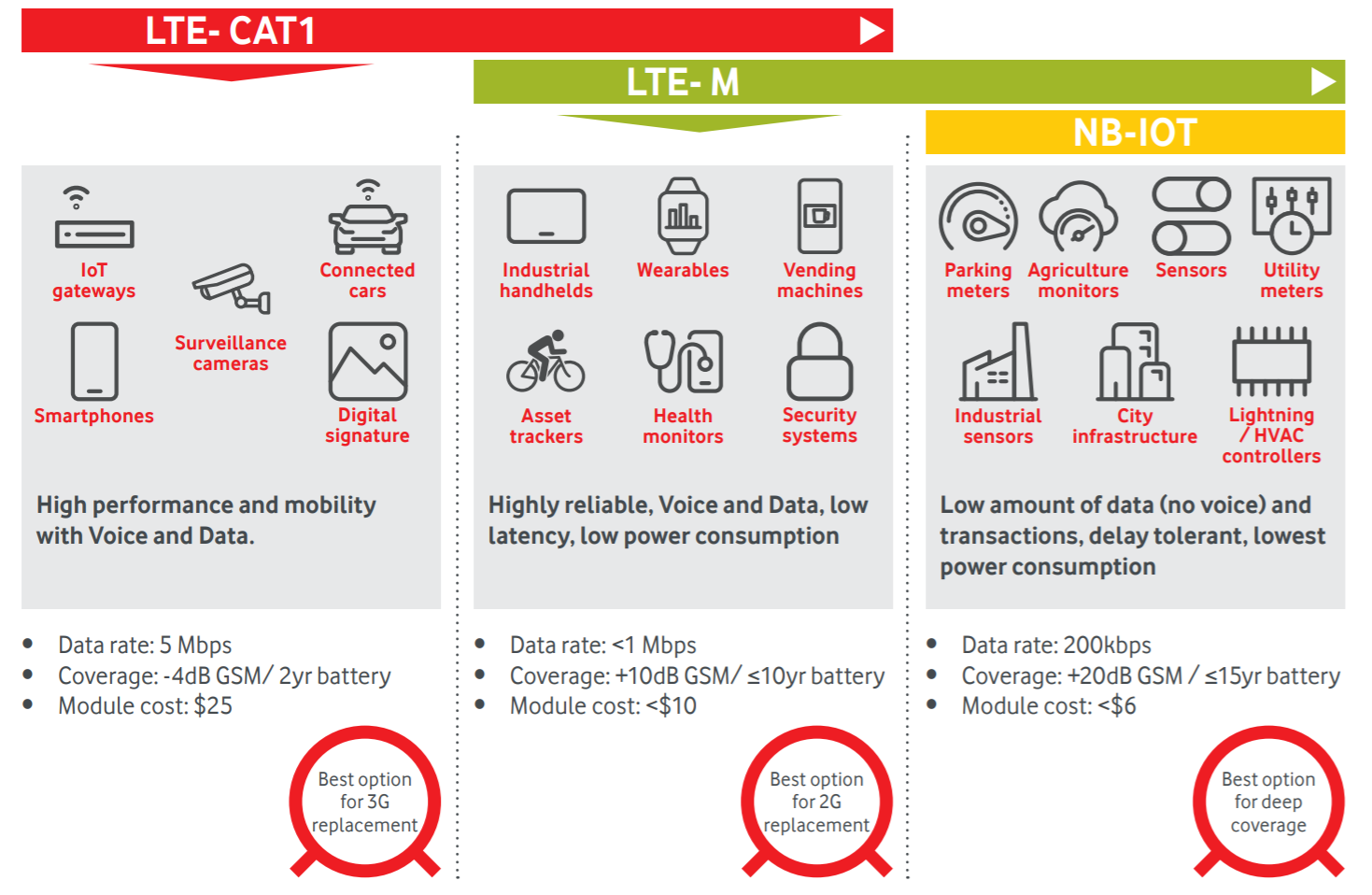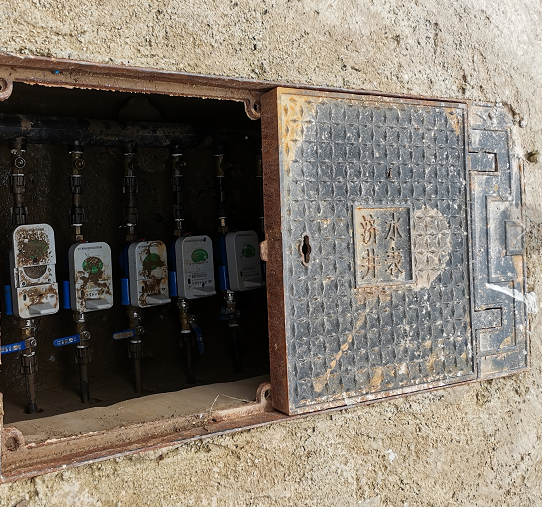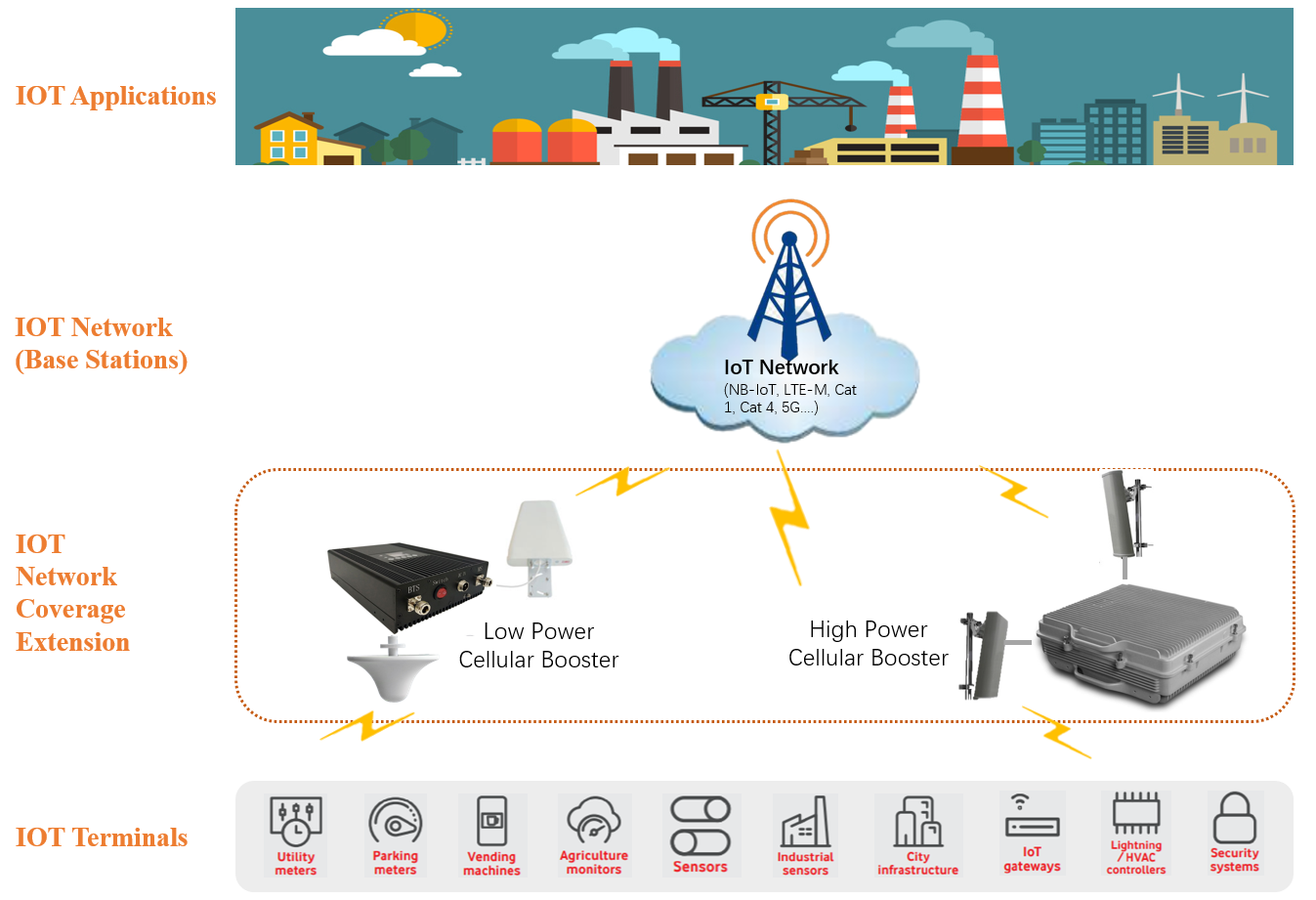IOT Network Coverage Extension Solution
Background
Narrowband IoT (NB-IoT) and LTE Machine Type Communications (LTE-M), these are Low Power Wide Area technologies (LPWA) which utilizes the radio access network for connecting devices with low bandwidth requirements whilst providing increased penetration with the added capability of using low power. The 3GPP released information concerning LTE-M and NB-IoT for Rel.13 in June 2016, known as CAT NB and CAT M or rather Category Narrowband and Category Machine Type respectively.
NB-IoT and LTE-M have evolved as technologies which enable the connectivity of a range of devices, using the low power consumption capability with increased coverage footprint.

Source: Vodafone
Based on our test results, NB-IoT has the ability to penetrate two to three double brick walls, enabling connectivity in underground car parks and basements. (Note +10dB approximately equates to one brick wall).

Source: Vodafone
However, there might still be many reasons that NB-IOT or LTE-M signals received by IOT terminals are too poor to communicate. For example:
1. The IOT terminals are too far away from the base stations.
2. There are more than two or three double brick walls between the IOT base stations and terminals.
3. There are other obstacles such as mountains, tunnels, etc.
4. The IOT terminals are installed within a metallic case or under a metallic cover.

Water meters installed underground with metallic manhole cover
Solution Introduction
To extend IOT network coverage for those disconnected IOT terminals and enable IOT communication, NB-IOT or LTE-M cellular booster could be adopted (Refer to M2M/IoT Cell Signal Amplifiers). The boosters are composed of a donor antenna, a repeater, feeders, and one or multiple service antennas. The donor antenna should be installed at a place where NB-IOT/LTE-M cellular signal is available, and connected to a repeater through a feeder, and then the amplified signal is transmitted through service antennas to destinated coverage areas. Hocell has a series of cellular signal repeaters of different IOT network standards, with one, two, three, four or even five frequency bands supported in one device. And the output RF power per channel is ranging from 20dBm to 43dBm, which can cover an area from less than 100㎡ to more than 30,000㎡. The IOT network architecture employing cellular repeaters is as below.

Solution Highlights
1. Fast to deploy. The products support automatic isolation detection and AGC (Automatic Gain Adjustment), which makes it free of configuration and easy to deploy. And don’t forget that when it comes to new deployment or adjustment of a telecom operator’s base station, it’s never that easy. The process is very long if final approval is possible, cost might be too high compared to the benefit, and not to mention that in some cases it’s just impossible to solve it from the operator network side, perhaps due to the limitation of the environment.
2. Flexible. According to coverage requirement and the actual environment of the installed IOT terminals, a tailored solution with the right network standards and suitable RF power could be selected. The point of installation is usually quite flexible to choose too.
3. Low cost. Firstly, a fitting model means the ideal balance between performance and cost. Secondly, the coverage problem could be quickly solved, which can significantly reduce operational cost.
